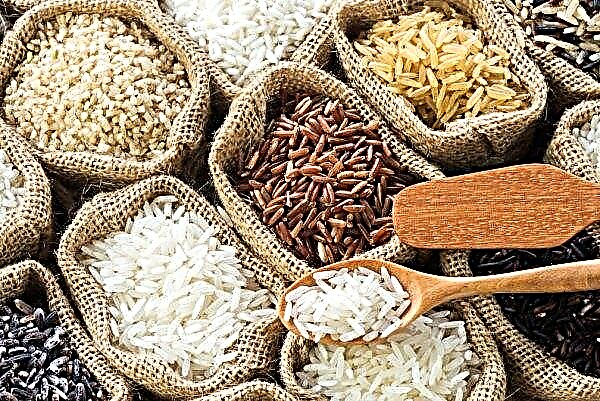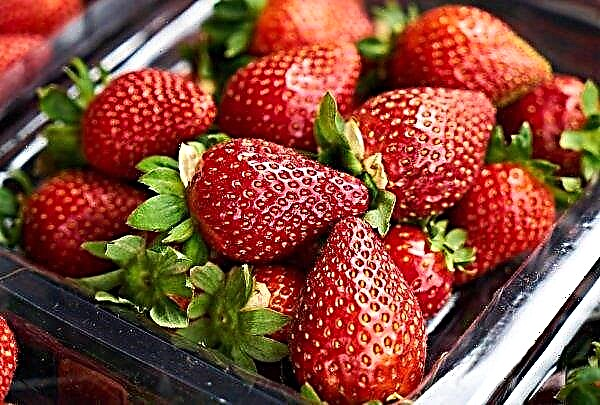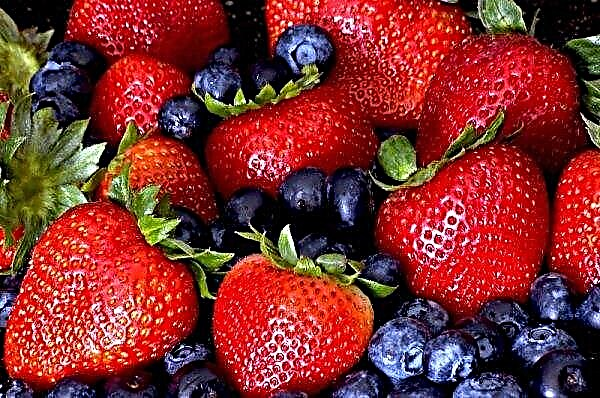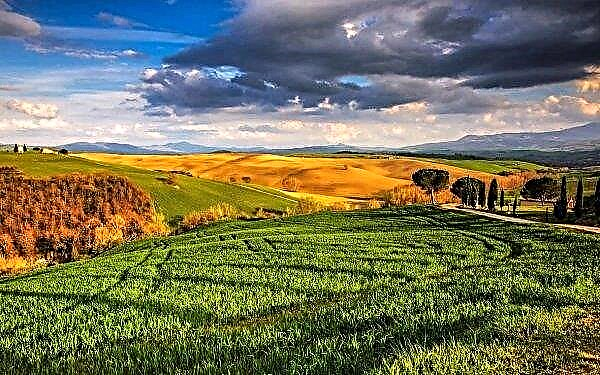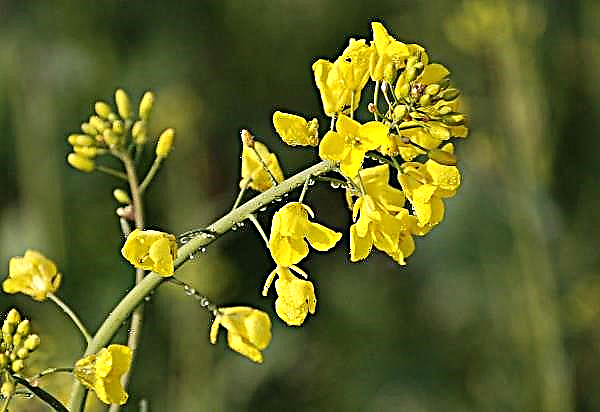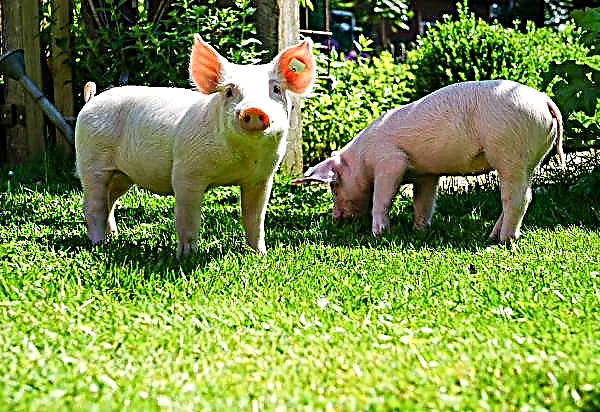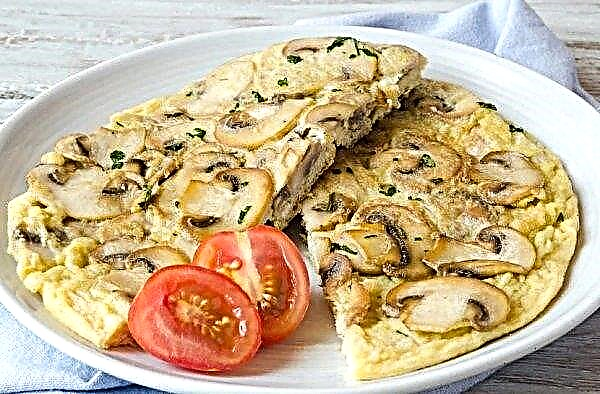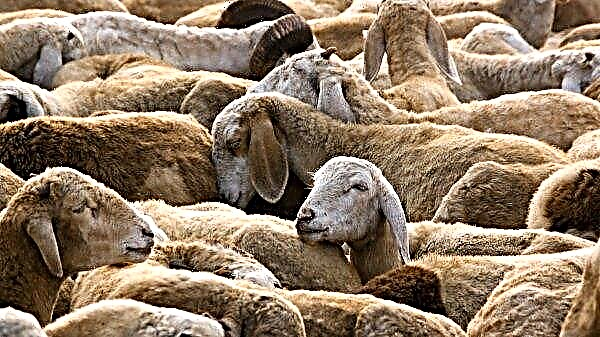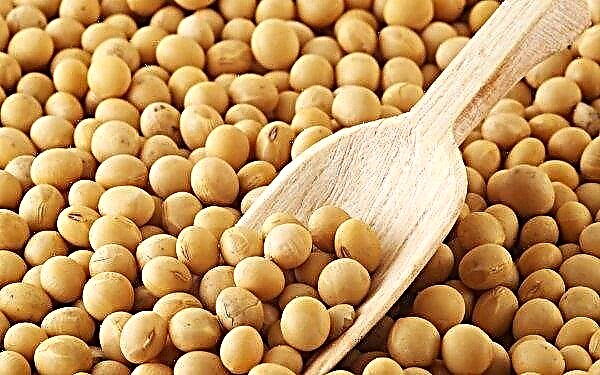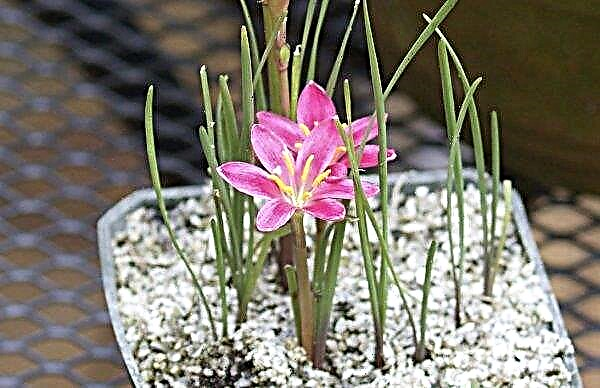There is an opinion that pelargonium and geranium are the names of the same plant, and therefore they should be looked after equally. Like it or not - let's figure it out.
Geranium and pelargonium: is it the same thing?
The names "pelargonium" and "geranium" are often used as synonyms. Many gardeners are interested in whether this is a plant or not. Geranium and pelargonium are two different genera of the geranium family. The interchange in the speech of the names of these plants, from a botanical point of view, is incorrect. In fact, geranium is a garden flower, and pelargonium is its equivalent.
Did you know? Both names have ancient Greek etymology. Geranos is translated as "crane", pelargos - as "stork". The names are associated with the shape of the fruit, which is similar to the head of a bird.
Plant description
Since the flowers belong to the same family, they have common features, but the full description of each is different.
Pelargonium
Pelargonium comes from South Africa. It is grown as a garden annual or as a perennial houseplant. The trunk is straight or curled. Finger-like or palmate leaves. Petals in buds are asymmetrical, have a different size. Depending on the species, different shades of flowers are distinguished.
Geranium
Garden perennial originating from northern latitudes. Also in the wild, it can be found in the tropical zone, mainly in the mountains. This is either a shrub or a herbaceous plant. Differs in frost resistance.
On a straight or curling stem on the petioles are green leaves. Leaf plates are sometimes cirrus, often palmate or palmate. In inflorescence from 1 to 3 buds. Petals are evenly distributed, color varied depending on the species.
Common and distinctive features of geranium and pelargonium
To understand what the difference between pelargonium and geranium is, you need to carefully look at the appearance of these plants.
Since these flowers belong to the same family, similar characteristics are inherent in both genera:
- the same fruit box, similar to a long beak;
- the trunk is straight or slightly curled;
- there is a small pile on the leaf plates;
- the leaves are located on the stem from two sides either opposite each other, or in turn;
- the buds exude a pleasant aroma.
Did you know? Scientific recognition of the healing properties of geraniums occurred in the mid-19th century. This flower attracted the attention of scientists because of its popularity among the poor, who used it to treat many diseases, and the leaves, roots, and flowers of geranium were used.
The main differences between plants are manifested in the requirements for caring for them, however, it is possible to find out how they differ by external data.
The color differences are as follows:
| Geranium | Pelargonium |
| It features a large color palette. Blue tones predominate, there are also instances in other shades, selected selectively. However, the scarlet flowers of this culture are not in nature. | Mostly pink, red and white flowers, you can also find variegated specimens with bicolor petals. There are no species with buds of blue, including blue and purple. |
| 10 stamens, all with anthers. | 7 stamens, not all fully developed. |
| Petals are symmetrical. | In the structure of the bud asymmetry prevails. |
| Petals from 5 to 8. | Often there are 5 petals, with 2 of them located at the top of the bud being larger. |
| Inflorescences are either semi-umbrella or solitary. | Inflorescences are large, umbrella. |
| Strong branched rhizome. | The root system is small, fibrous. |
Important! Cross geraniums and pelargonium is not worth it, because they have different genetic characteristics, and these two plants will not have offspring.
How to care for flowers?
Care for the two genera of geraniums is different. Below are its main differences:
| Geranium | Pelargonium |
| Grown in garden conditions. | Only grown indoors. |
| Frost-resistant, does not need shelter for the winter. | A heat-loving plant that can be transplanted from a pot to the street only in the summer. |
| It is a perennial, therefore, does not need transplants. | When gardening can only grow as an annual plant. |
| Feeding is desirable, but not required. In this matter, it is important to look at the needs of a particular type. Often in the spring it is advisable to make a nitrogen-based product. Also, after planting, it is recommended to feed the bush with a mixture of compost and peat. | Fertilizers are important during growth. You can use universal dressings for decorative flowering plants and apply them according to the instructions. Organic products are best avoided. |
| Good lighting is preferable, but it also tolerates shading conditions (depending on the type). | Be sure to provide bright diffused light. |
| The most convenient method of reproduction is dividing the bush. | More often propagated by cuttings, less often - by seeds. |
| The need for hydration is determined by species. | Moderate regular watering is required. |
 Pelargonium and geranium are two different species that need to be looked after differently. A florist who knows all the intricacies of growing can successfully care for flowers and enjoy beautiful blooms for a long time.
Pelargonium and geranium are two different species that need to be looked after differently. A florist who knows all the intricacies of growing can successfully care for flowers and enjoy beautiful blooms for a long time.


